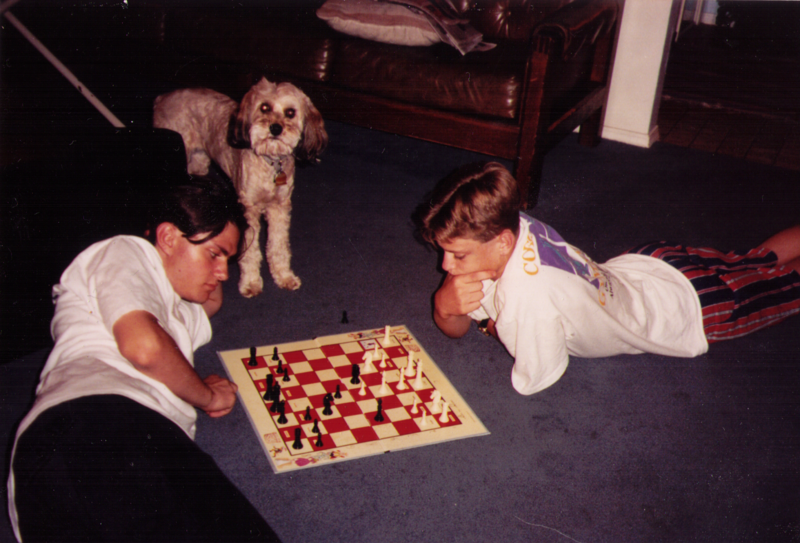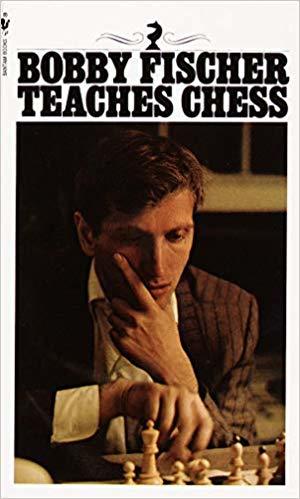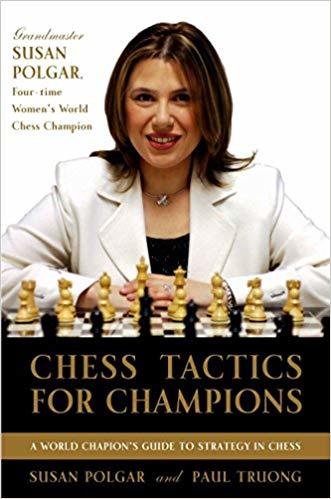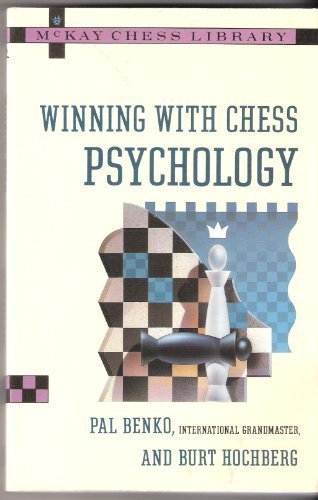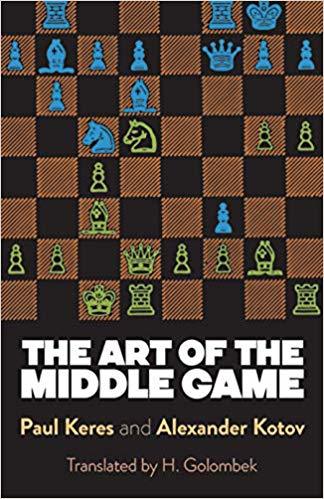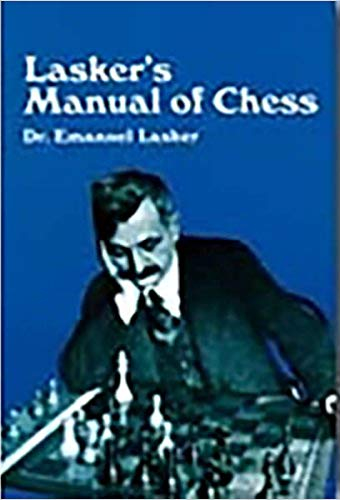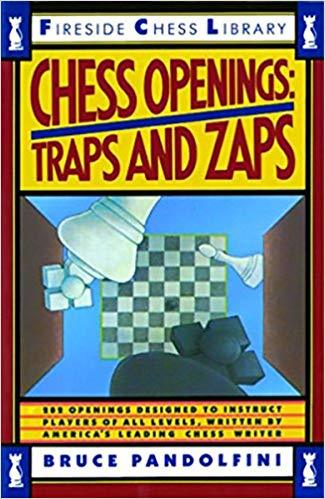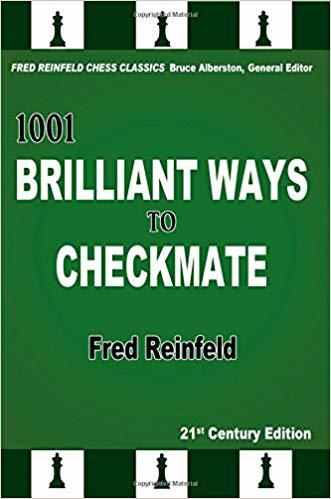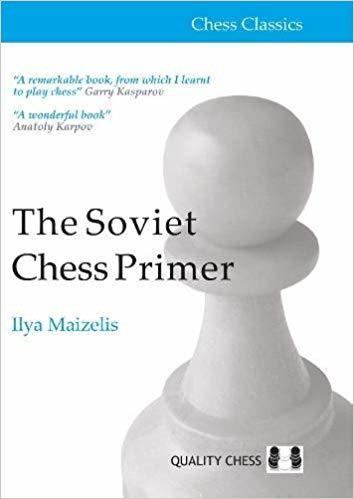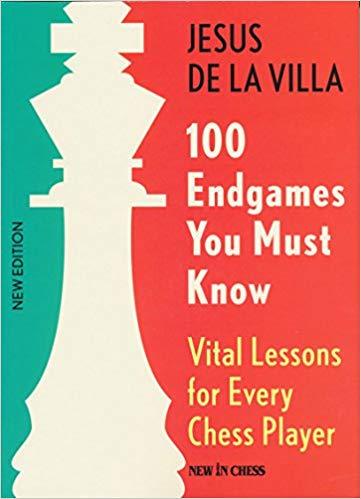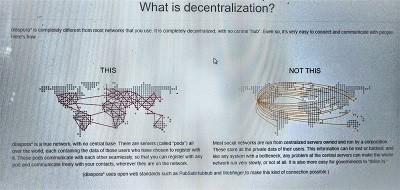
|
Top Ten Best Chess Books - Learn and Become a MasterGaming Articles Dec 13, 2019 by Tectract Whether you are just starting out learning to play, or an old master brushing up for the next grandmaster competition, these wonderful chess books will inspire you and tell the amazing history of chess. See the game through the eyes of the greatest grandmasters of all time. Learn to think like a chess magician and amaze your friends with stunning sacrifice combinations and forced mating sequences! Come along and enjoy this ride through a uniquely human experience, and one day you could be the next World Champion! tags: #gaming #chess #strategy #books #master #grandmaster #lichess #learning #studies #endgame #openings #tactics #fisher |
|||||||||||||
Chess is a way to connect with friends, old and new, and a fun mental sparring competition. To me, chess is an art, I strive to create beautiful games with stunning forced sequences and wins from what look like surely lost positions. I love a good draw just as much as a win, especially against a higher-rated player. My chess inspirations have been Capablanca and Reinfeld for their combinations, Karpov and Kasparov for their grinding, calculating tenacity, Lasker for his amazing ability to win from lost positions by forcing hard choices on his opponents, and of course Fisher and Magnus Carlsen for their sheer creativity and seemingly unbreakable dominance in their eras. These books are more than just a collection on a shelf for me, they are the tactics and methods I have used in my goal to become a master, and the positions in these books are echoed in my own games. The ones we remember most are the biting defeats of course, a mistake is ones sharpest teacher. It may seem like a slog to go through all of De la Villa's endgame positions, but when you win by preventing the "tailhook" in a pawn-rook endgame against a master, you will be jumping for joy and singing praise to the clever De la Villa! Here's my list of the top ten chess books of all time, I'll start with the ones more suited for beginners and work my way up to the most advanced studies for aspiring masters and grandmasters.
Level: Beginner author: Bobby Fischer A classic that every chess fanatic should own. Yes, one of the greatest grandmasters of all time, Bobby Fischer, wrote a book on chess, and it's for beginners. This book has nice big diagrams, with all the steps laid out for a beginner to start learning the annotation system, how to visualize with chess diagrams through a few moves of a sequence, and most importantly it shows you how to ACHIEVE CHECKMATE against your opponent, using simple, effective tactics. This book is pure gold for a new player, it will teach the "back-rank mates", and it also shows the calculating, cool mind of a grandmaster at work. Even experienced players can benefite from quickly going back through this book and brushing up on their back-rank mating technique. This book is a historical gem. If you keep a library, then this book should be in it!
Level: Intermediate author: Susan Polgar & Paul Truong Yes, a book by a female grandmaster! Susan Polgar became the #1 rated female player at the age of only 15 years old, and won the Women's World Chess Chamionship four times! So, needless to say, she was something of a child phenomenon and definitely a force to be reckoned with on the board. In this book, Susan and her husband Paul (also a FIDE Master and editor of Chess Daily News & information) teach the tactics. Nothing but tactics, and every single one of them. This is like the ABC's of chess. You must know these basic elements by heart to be able to craft combinations and to guide your strategy. Strategy is the long-term planning and goal-seeking but TACTICS are the real-world implementation of how your strategies will come to fruition. As a chess artist, these tactics are your palette, which you will paint from. The pin, the skewer, the X-ray attack! Don't forget removing the gaurd, the decoy, the Zugzwang and the pawn-promotion themes. Susan takes us through the basics of how to trap your opponent into a losing position where you will end up winning material, how to spot those tactical opportunities, and even gives us a wonderful tour through some beautiful historical games that clearly illustrate tactical battles, and the most important 2-move and 3-move mating sequences to watch out for. Perfect for getting up past the "average" level and starting your real, true attempt to become a strong player and even a master contender. These tactics work. Learn them and love them 3) Winning with Chess Psychology Level: Intermediate author: Pal Benko
Pal Benko, French-Hungarian wizard of chess. At age 20, in March 1952, he was sent to a concentration camp for attempting to defect to the American embassy in West Berlin during a chess tournament in East Berlin, where he stayed for over a year until after the death of Stalin, he obtained release and made his way to the United States. Earning his FIDE Grandmaster title in 1958, Benko went on to defeat such players as Fischer, Mikhail Tal, Tigran Petrosian, and Vassily Smyslov, but never achieved the covetted World Championship spot, as he also lived somewhat in the shadow of the great Bobby Fischer, who kept taking his interzonal spots in the World Chamionship preliminary rounds. This book is truly about getting into the mind of your opponent, and into the mind of the greatest players of all time. It's not just about psychology, but about how a person's whole attitude towards life and the world can be reflected in their styles, and also, how to use that against them! The titles are so wonderful and meaningful, "Chess as a Fight" for Lasker, "Chess as Art" for Alekhine, "Chess as Sport" for Botvinnik, "Chess as Life" for Bobby Fischer, "Chess as War" for Kasparov. This book makes you truly feel the lives and passions of these players, and it's one of the greatest stories of the 20th century. There are sections on using chess psychology to beat people in the opening, or in the ending, or how to "psych out" computers. Benko even teaches us how to to play against women! He must have been a true genius to take that one on. Benko talks about dealing with time pressure, distractions, and summarizes with some commen-sense principals of "chess psychology". NO ANTICS! This is a great book, one of my favorites. It will not only teach you to be a better player, it is a truly wonderful collection of historical biographies and masterful analysis of epic 20th century games between grandmasters. Perfect gift book, or just comfy companion book reader the fire. Get out your chess board to follow along with some of the more advanced analysis, in this one. 4) The Art of the Middlegame
Level: Intermediate to Advanced author: Paul Keres One of the immortal greatest players of chess, Paul Keres is commonly considered the strongest player to never win the World Championship, earning him the title "The Eternal Second", but he DID manage to win at tournaments including such players as Mikhail Botvinnik, Max Euwe, Reshevsky, Alekhine, Capablanca and Flohr. Keres was one of the great players, hailing from Estonia, in the time of great Soviet players, and in his day he lived in the shadow of Botvinnik and, of course, Bobby Fischer. But Keres held his own against such greats as Mikhail Tal, Laszlo Szabo, Petrusian and Smyslov. This was all just a prelude, of course, to the entrance of a young Karpov, the amazing Karpov! This book will teach you the strategic thinking of the greats, and how to position yourself as the game transitions from opening to middlegame, and how to convert your middlegame advantage into a solid, winnable endgame. This book has a great section on "How to Defend Difficult Positions", and in-depth focuses on the possible pawn "structures" that can arise, why some of them are weak and some are strong. It reminds me of my old Russian chess coach with his unstoppable pawn advances, like brick walls. This book also features a great section on "The Art of Analysis", which is critical, for humans to have any chance of achieving "computer-like" strength, we must prioritize our time spent in analysis, know which lines to analyse, and train ourselves to think and visualize positions like the grandmasters. This section on analysis is a wonderful little journey into the mind of Keres. This book is a classic, it is timeless and a must-have part of your chess library. 5) Pawn Power in Chess level: Intermediate to Advanced author: Hans Kmoch
We are going old-school with the pawn structures. This is so fundamental to becoming a master, understanding how to "lever" your pawns. Hans Kmoch was an old friend of Alekhine, and an international master, and manager of the Manhattan Chess Club, after WWII. This book is where a lot of the old names for pawn structures came from, like the "quart-grip", a common defensive position. In this classical text, Hans goes over the theory of pawns, as it was known up to the early 1930's. Modern theory might focus more on positional "dynamics" and subtle endgame points gleaned from computed libraries of endgame positions, however this is the deep "human" knowledge of how to "lever" your position by setting up a situation where more than one pawn can take, how to know when doubled pawns will be strong versus when they will be weak, how to coordinate your pawns with your minor pieces to greatest effect, all with clear examples of games won by these thought processes. Strength of knight pawns and the weaknesses of rook pawns are elucidated with nice, easy-to-understand diagrams. Reading this book will improve your play, and can definitely help you achieve the advanced level. For masters and Grandmasters, they should already know this stuff, but it's always good to remind yourself and play like the Russians, with their impossible, impassible pawn structures. You should know when your three-versus-three pawn lines are a won endgame versus a lost endgame (yes, you can produce a passer!) or when you should keep the bishop versus the knight, by reading the pawn layout going into an endgame. This book is so well-known that most older players will recognize it on sight just from the cover image. It's a classic, it's a must have for your library and for the budding chess champion, it's must for their repertoire of dirty tricks used to win tournaments. Buy this book, before they outlaw all paper books! All you Millenials can read it on your holographic iRetina devices or whatever, just as long as you stay off my lawn.
level: Intermediate to Advanced author: Dr. Emanuel Lasker Lasker is one of the earliest well-known Grandmasters, and he's known for winning from "lost" positions, and for his brilliant tactical saving moves and game-turning "stingers". Lasker is considered by some to be the strongest modern player simply because he held the World Championship for so long, an astonishing 28 years! In this book, you will get thoroughly into the mind of the magician, with detailed analysis of many of his strongest openings, and covering tactics, strategy, positional play and analysis, and of course, the combinations he was so famous for. Lasker was truly the student of Steinitz who grew to become the master. For this book I do recommend having a chessboard or chess program handy so that you can follow along, because Lasker often goes on long analysis based on only scant diagrams. It's worth the time, though, if you can learn to play like Lasker, you will surely out-do and astonish pretty much everyone at your local chess club. I would have loved to see some games between Lasker and Fischer because I see them both as highly creative and extremely aggressive players, and I think it would have been a real fireworks show! This book is a classic for a reason, everyone wants to be the next Lasker! 7) Chess Openings: Traps and Zaps level: Intermediate to Advanced author: Bruce Pandolfini
If you have ever watched "Searching for Bobby Fischer", then you have been aquainted with Josh Waitzkin and his early childhood mentor, Bruce Pandolfini, prolific chess trainer, National Master, a guy who got his early start as a pro teacher and recognized public figure by helping analyse the 1972 World Championship match between Spassky and Fischer for NBC. Bruce is what I consider to be a "mean" chess player, and by that, I mean that he is the type of player that tries to lead you into a line where you may easily miscalculate or not fully see to the end of the sequence, and then it becomes very costly or even game-losing. You walk into a passive-looking position, and then you realize you have stepped in a beartrap. This whole book is basically just 202 "traps", that you can lay for your opponent, organize by opening system, and it demonstrates Bruce's style of play pretty clearly. This book is filled with cool and interesting sacrifices where even an advanced player might step in, and get caught, all within the earliest opening sequences of the game. They are hard to memorize, though, and a grandmaster will not fall for these tricks, most masters probably will not, either, they will just veer off into a line they know better, by refusing the sacrifice, or trying to transpose the position. They are, however, useful for becoming a master, which is all you need, to start. Of course, Bruce played at an extremely high level, he wasn't just about opening traps, he was a nightmare on the chess board, the type of player you dread to be paired with because he calculated deeply and rarely if ever blundered or even made a mistake, so you better be playing under 20 centipawn loss and be having a great day if you want to take him on! I recommend going back and using this book as reference once you already are experienced enough to have some favorite pet openings, and then going and looking at the traps in those openings. This way you can get some new ideas about tactical motifs to try out, and also better understand any tricks your opponent might play against you in those systems. This will "harden" your game, and make you strong in the openings, make you more dangerous on the board, and you can get some of those awesome devastating 20-move wins and boost your rating. There's a reason why Bruce Pandolfini was such a highly regarded and famous chess teacher, and it's because he was a great chess teacher, and his students achieved amazing things like becoming masters themselves. You can do it too! 8) 1001 Brilliant Ways to Checkmate & 1001 Winning Sacrifices and Combinations
level: Intermediate to Advanced author: Fred Reinfeld Ok, I'm sneaking in two books as the number 8 book, but only because they are so similar and so awesome. Fred Reinfeld achieved a rating of 2593, in the early 1940s, a grandmaster and one of the strongest players in the world at the time. Fred's books are what really shines through, because they show his incredibly methodical way of thinking. These books are literally just a big sequence of starting diagrams that you look at, and then in the end, is all the annotated solutions, always forced, sometimes in several lines. Winning sequences like these are known as "pryomes" in chess, this book will help you spot them. I may have mentioned, it's methodical, for example the checkmates are laid out into sections by these tactics: queen sacrifices, checkmate without the queen, storming the castled position, harrying the king, discovered and double checks leading to mate, pawn promotions, and then some "variety" for you to guess the tactic, and some composed problems. The winning sacrifices and combinations are laid out into sections by these tactics: pins, knight forks, double attack, discovered attack, discovered check, double check, the overworked piece, removing the guard, clearance, interference, queening combinations, the vulnerable first rank, queen sacrifices, x-ray attack, surprise moves, defensive combinations, trapped man, zugzwang, the helpless king, and the weakened castle position. These books are like an encyclopedia of chess combinations and tactics! They are also the most wonderful tool for you to work on you visualization technique. You need to be able to see the board in your head and be able to visualize some 5-10 moves (10-20 ply) ahead, to see to the end of these combinations. This practise will make you a killer on the board. It's like a muscle, it's like riding a bike. Once you learn it and do it enough times, it becomes like a part of your brain that just does it automatically, and you are always getting better and faster as you progress to higher levels of chess play. These books will show you how to spot ANY little weakness in your opponent's armor, and work your blade in. These books are not just cool chess books, they are TOOLS for training your brain, to become a master. They also just have crazy cool titles and look all badass in your library. 9) The Soviet Chess Primer author: Ilya Maizelis level: Advanced
10) 100 Endgames You Must Know: Vital Lessons for Every Chess Player author: Jesus de la Villa level: Advanced
I hope you guys will love this collection of classic chess books as much as I do, and it can bring you happiness and help improve your game. One thing that always improves my play is to watch some high-level chess analysis by my favorite chess commentators: Jerry ChessNetwork, and agadmator's Chess Channel, I especially love watching World Champion Magnus Carlsen playing on Lichess! Cheers and thanks for reading! Dr. Ryan Molecke Note: I had to look up whether or not it is legal to use these book cover "thumbnail images" for this blog post. Turns out this BLOG is LEGAL and DOES NOT VIOLATE ANY COPYRIGHT LAW, yay! | ||||||||||||||
